Hon Chen Temple is a sacred place that has an important position in the spiritual life of the Hue people. This is also the only temple in Hue that features a harmonious and unique combination of royal rites and folk beliefs.
Hon Chen Temple Introduction
- Address: Hai Cat village, Huong Tra, Thua Thien Hue
- Annual festival: third and seventh month of the lunar calendar
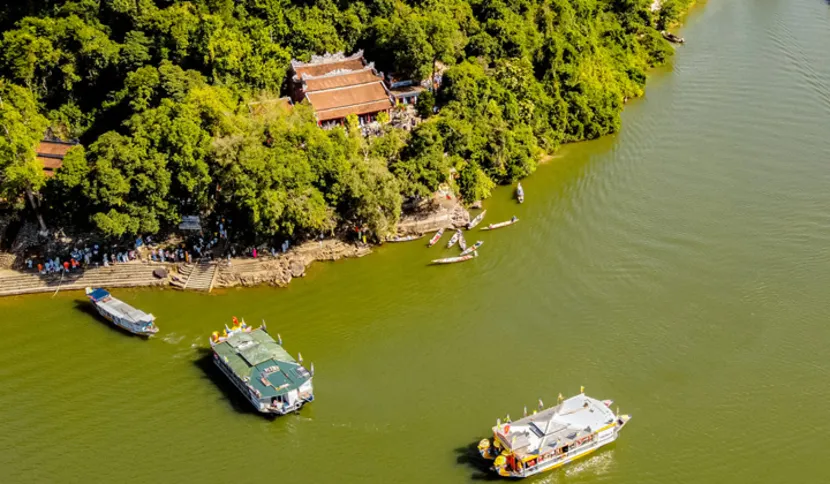
In the relic complex of Hue monuments, Hon Chen Temple is associated with the most legends and stories. According to folklore, the old Hon Chen temple was called Hoan Chen with the meaning of "return the jade cup", because King Minh Mang once came here, dropped a jade cup into the Perfume River. Minh Mang was thinking there was no way to retrieve it but afterwards a giant turtle reached him and returned it to him.
In the royal official documents of the Nguyen kings, the temple still appears under the official name "Ngoc Tran Son Tu" (the temple in Ngoc Tran Mountain). During the Dong Khanh dynasty (1886-1888), the new temple was renamed Hue Nam Dien (meaning to bring favour to the king of the south) and is also associated with many other anecdotes. Through the years, people are familiar with the name Hoan Chen temple or Hon Chen temple.

Hon Chen temple was originally the place where the Cham people worshipped Goddess PoNagar (the mother goddess of the earth), then the Vietnamese continued to worship her under the title Mother Thien Y A Na. Receiving a unique religious relic such as the Hon Chen Temple from the Cham, the Vietnamese easily integrate their divine belief with religious features of the Cham people. This is considered as religious integration or localization. To transcribe the word PoNagar into Vietnamese language, many scholars had to create a similar sound with the equivalent meaning with four Vietnamese characters: Thien Y A Na.
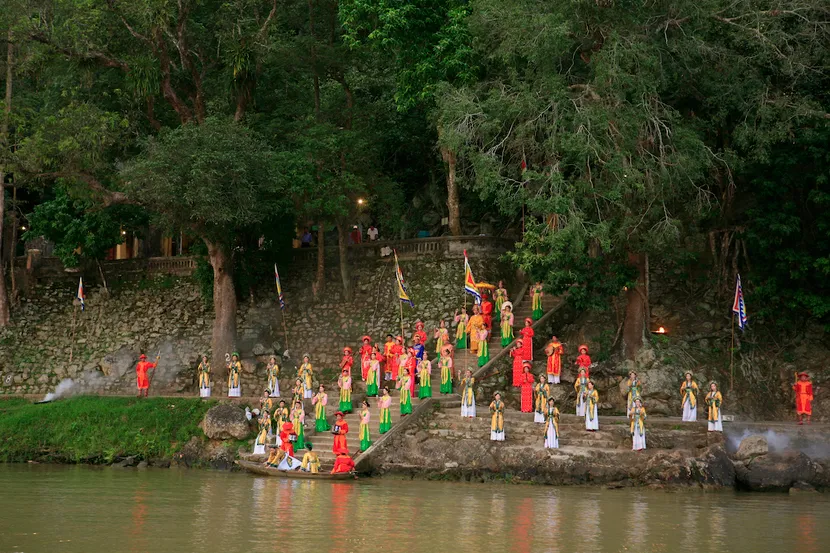
History of Hon Chen Temple
In March 1832, the Hon Chen temple was repaired and expanded by King Minh Mang.
In 1834, it continued to be restored.
Since 1954, Princess Lieu Hanh, namely Van Huong Thanh Mau, was also worshipped here. In addition, in Hon Chen Temple, people also worship Buddha, Saint Quan Cong and more than 100 other gods belonging to the disciples of the above-mentioned gods. Therefore, in terms of beliefs, Hon Chen Temple is not organised according to principles, but dedicated to many different beliefs.
From 1883 to 1885, due to a difficult period in the history of the Nguyen Dynasty, King Dong Khanh waited for such a long time and still could not succeed his adoptive father, King Tu Duc. He asked his mother, Mrs. Kien Thai Vuong, to go to Ngoc Tran Temple to pray and ask Thien Y A Na if he could become king. The result said his wish would be fulfilled.
In 1886, after being enthroned, King Dong Khanh immediately rebuilt this temple spaciously, made many more sacred objects for worship and renamed the temple Hue Nam Dien to show gratitude to the Holy Mother. Hue Nam means to grant favours to the southern country, the king of the south.
Architecture of Hon Chen Temple
In a decree given to the temple in 1886, King Dong Khanh likened the whole nature of Hon Chen Temple to the image of a lion drinking water from the river. About 10 graceful structures are located halfway up the southeast slope of the mountain, hidden in the shade of an ancient grove of lush vegetation. There are many steps from the high temple to the blue water pier. The surface of the river is as smooth as a mirror, reflecting the panoramic views of nature and architecture.
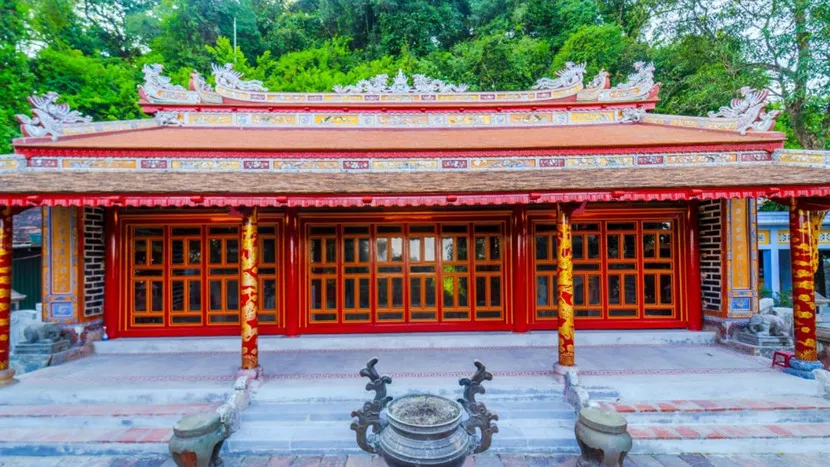
The architectural layout of the entire temple is not too extensive, including the main shrine, Minh Kinh Dai, located in the centre, facing the river. To the right are Quan Cu House, Trinh Cat Vien. To the left are the Temple of the Five Saints, the Altar of Mandarins, a cavern that worships Mr. Ha Ban or Mr. Tiger, Am Ngoai Canh. At the end of the road on the left is Am Thuy Phu. On that architectural plan, there are a number of other small altars scattered here and there, such as Am Co Ngoc Lan, Am Trung Thien...
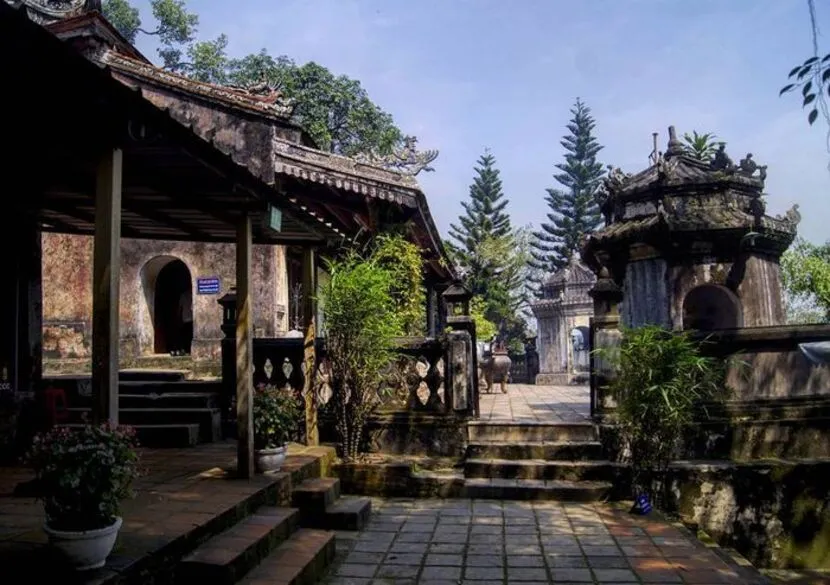
Minh Kinh Dai was built in 1886 under the reign of King Dong Khanh. It is divided into 3 palaces (in order from top to bottom and back to front according to worship function).
Minh Kinh Cao Dai, also known as the upper temple, is divided into two floors. The upper floor worships Holy Mother Thien Y A Na, Holy Mother Van Huong, the image of King Dong Khanh and some other deities of high rank in the religion. The lower floor is used as a place for receiving guests and a place for temple guardians...
Minh Kinh Trung Dai - the second temple, also known as the Council Temple, has a high and large altar in the centre. This temple worships dozens of different deities, including Buddha, and is used as a place to decorate altars used in major festivals: Cung Nghinh Mau, Phung Lien, Long Dinh.
Minh Kinh Tieu Dai, also known as Tien Dien - where a large incense altar was built, on both sides are drums and bells, where important rituals were performed. The place of worship for pilgrims is also extended by a portico and courtyard in the front of the building.
On the roof of Minh Kinh Dai as well as on other surrounding architectural works, the image of the phoenix is used a lot for decoration, because the phoenix represents women and female goddesses. It is also used to decorate many worship objects. Most of the precious worship objects in Minh Kinh Dai are clearly stated to have been made during the reign of King Dong Khanh.
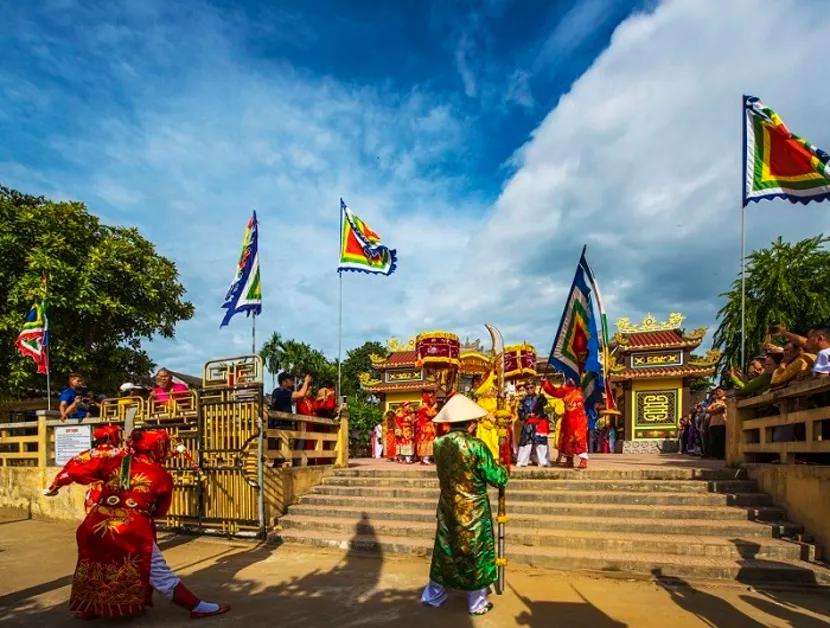
Hon Chen Temple plays a very important role in the spiritual life of the Hue people. Furthermore, it is also the only temple in Hue that has a combination of royal rituals and folk beliefs, spirituality and superstition. The temple also boasts the art decoration reaching its peak in the late 19th century.The temple is also a mixture of different religious beliefs. During festivals in the third and seventh months of the lunar calendar, the temple is more vibrant thanks to many more visitors coming.
To see more about Hue:
>> The Mausoleum of Emperor Tu Duc - the Most Beautiful Mausoleum in Hue
>> Best Food in Hue : Exploring the Rich Flavorful Delights of Central Vietnam
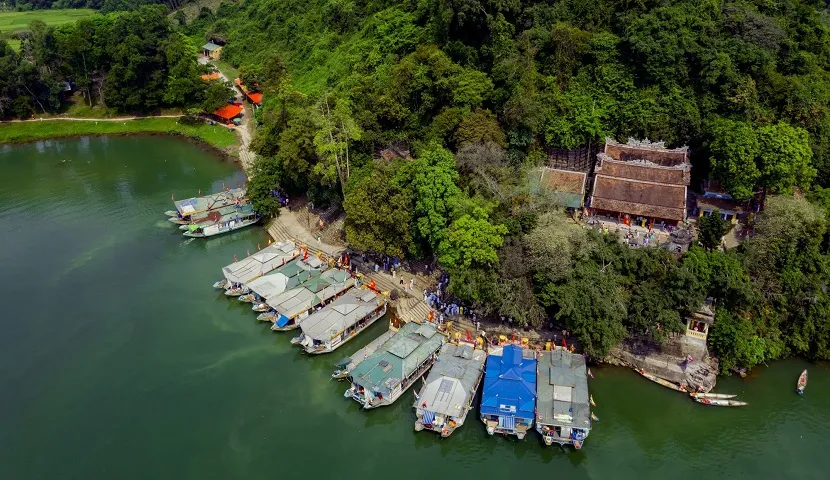







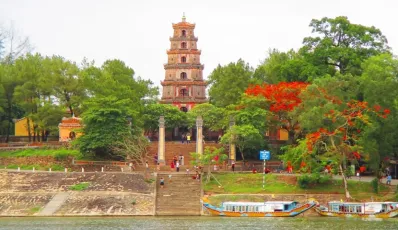

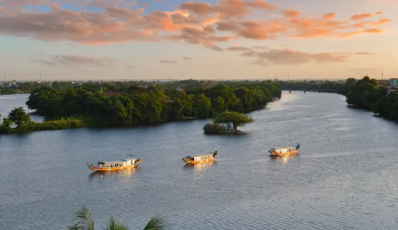
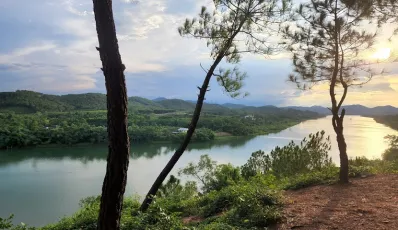
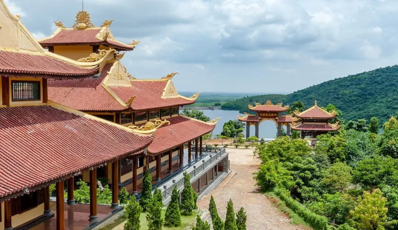
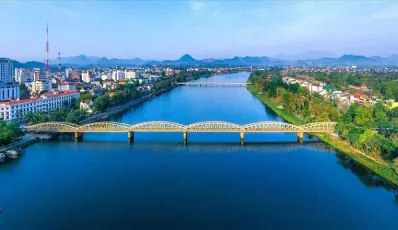


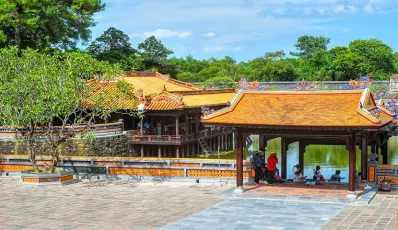




 TRAVELERS' CHOICE 2025
TRAVELERS' CHOICE 2025 



01 Comment
Hungary
Do your tours include experienced tour guides? I want to do a Vietnam tour instructed and informed by a tour guide.
Write Reply